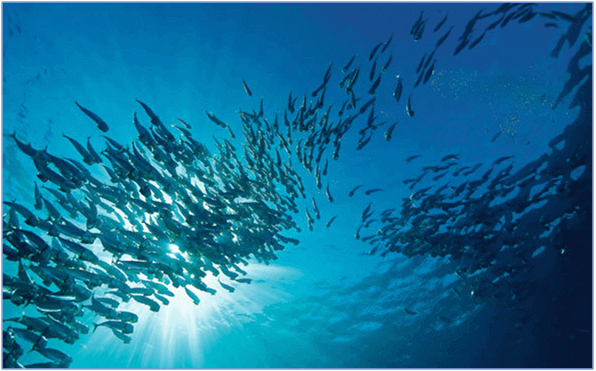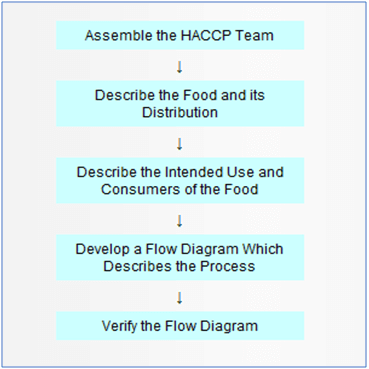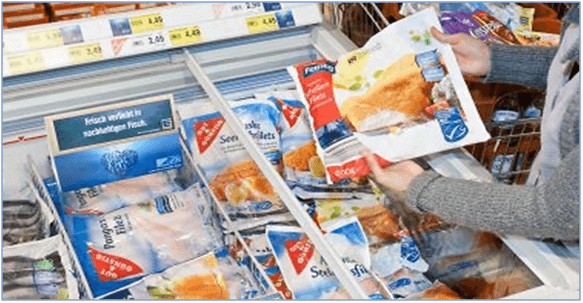Moving into the 21st century where seafood sustainability become a key question for many environmentalists, humans are constantly struggling to seek a balance between the exponential growth in demand for food source and its sustainability. With the advance in technology and the internet where product information and business-to-consumer (B2C) platform can easily influence a buyer’s interest, buyers are now overwhelmed with choices.
It is therefore imperative to have an industrial standardization for the seafood industry to align the type of quality, fishing process, rule and regulation for fishing; and area for fishing exploration. The Hazard analysis and critical control points (HACCP) is implemented to ensure that global food supplies are safe and maintain at a hazard-free and sustainable status for all consumers.

Table of Contents
Hazard Analysis and Critical Control Points (HACCP)
Hazard analysis and critical control points (HACCP) is a management system in which food safety is addressed through the analysis and control of biological, chemical, and physical hazards throughout the entire Seafood Supply Chain.
HACCP is a systematic approach to the identification, evaluation, and control of food safety hazards based on the following seven steps:
Step 1: Conduct a hazard analysis of biological, physical or chemical food hazards.
Step 2: Determine the critical control points (CCPs).
Step 3: Establish critical control limits such as cooking temperature and time.
Step 4: Establish monitoring procedures of CCPs.
Step 5: Establish corrective actions.
Step 6: Establish verification procedures to confirm that the HACCP system is working effectively.
Step 7: Establish record-keeping and documentation procedures.
Guidelines for HACCP
HACCP system is a methodology that provides fishermen, traders and consumers a reference point and guideline on the importance of safe and sustainable food supply chain. In order to achieve HACCP certification, prerequisite programs such as Good Manufacturing Practices (GMPs) are required to lay the foundation for successful implementation in a HACCP framework. The development of a HACCP framework will require five preliminary tasks to be accomplished before the application of the HACCP principles can be applied to the product chain and distribution processes.
The five preliminary tasks are:

HACCP Certification
The advantage of HACCP certification provides both buyer and seller an intangible confident and trust when it comes to the business table. For the buyer, it provides them with assurance in term of product quality, supply source and their commitment towards food source sustainability.
For the seller, HACCP does not just serve as a commitment toward supply sustainability but also act as a kind of branding tool for entry-to-market, opening up new business opportunities around the world.
HACCP, therefore, does not just bring a regulatory effect on the seafood industry but also commercial values. To certify with HACCP, the following steps need to be taken:
Step 1: Establish Contact
Get in touch with HACCP so that you can explain your requirements as well as get a quotation. HACCP have a support team ready for you 24/7 and it will understand your needs.
Step 2: Form Filling
Next, fill the certification intent form and then send it back to HACCP. When they receive this filled form, they will carry out a complete analysis of your organization with respect to the certification applied for.
Step 3: Document Preparation
Upon agreement and acceptance of their quotation, their highly qualified team of experts will assist in preparing the mandatory certification documents. These are specific for the kind of certification one applies for, in this case, the HACCP certification.
Step 4: Pre-assessment
HACCP will then conduct an audit to pre-assess and ensure that your business meets all the required certifications. At the same time, they will offer the necessary training to you to ensure that you are ready for the certification when the time comes.
Step 5: Certification Audit
After they have prepared you, the next step will be the certification audit by the certification body. Their prior preparation and assistance during this final step guarantee your success.
Marine Stewardship Council (MSC)
MSC is one of the key councils that continuously formulate the environmental standard for fisheries in the seafood industry. It has more than 300 expert and individuals from different organizations around the world, with the objective to prevent unsustainable and illegal fishing around the world. In order to keep MSC standard applicable in the ever-changing eco-environment, MSC has taken the ‘Guidelines for the Eco-labelling of Fish and Fishery Products from Marine Wild Capture Fisheries’ adopted by UN Food and Agriculture Organization (FAO) in 2005 as a benchmark to keep their environmental standard up-to-date.
MSC standard consists of three core principles wherein fisheries are required to complain to:
• Principle 1: Sustainable fish stocks
The fishing activity must be at a level which is sustainable for the targeted fish population. Any certified fishery must operate so that fishing can continue indefinitely and is not overexploiting the resources.
• Principle 2: Minimising environmental impact
Fishing operations should be managed to maintain the structure, productivity, function, and diversity of the ecosystem on which the fishery depends.
• Principle 3: Effective fisheries management
The fishery must meet all local, national and international laws and must have a management system in place to respond to changing circumstances and maintain sustainability.

Aquaculture Stewardship Council (ASC)
ASC was founded in 2010 by the World Wide Fund for Nature (WWF). Aquaculture plays a major role in supplying food and social benefits for mankind whilst minimizing negative impacts on the environment. ASC is an independent international non-profit organization that manages the world’s leading certification and labeling programme with their main objective to educate buyers and sellers on the food source and environmental sustainability. The certification process is as below:
The full content is only visible to SIPMM members
Already a member? Please Login to continue reading.
References
Florian Kozak. (2015). “How Sustainable Seafood can positively impact Developing Countries”. Retrieved from http://www.wwf.eu/?uNewsID=248119, accessed 15/03/2019.
HACCP Singapore. (2014). “Understanding HACCP”. Retrieved from http://haccp.com.sg, accessed 15/03/2019.
Khoo Chai Luan, DPSM. (2018). “Overcoming Key Challenges of Sustainable Procurement Practices”. Retrieved from SIPMM: https://publication.sipmm.edu.sg/overcoming-key-challenges-sustainable-procurement-practices, accessed 15/03/2019.
Liyana Othman. (2016). “Consumers are Key to Seafood Sustainability: WWF Singapore”. Retrieved from https://www.channelnewsasia.com/news/singapore/consumers-are-key-to-seafood-sustainability-wwf-singapore-8104420, accessed 15/03/2019.
SGS. (2019). “HACCP Certification”. Retrieved from https://www.sgs.com/en/agriculture-food/commodities/audit-certification-and-verification/certification/haccp-certification, accessed 15/03/2019.
Winky Lim, ADPMM (2017). “Ensuring Sustainable Practices in Procurement for Effective Supply Management”. Retrieved from SIPMM: https://publication.sipmm.edu.sg/ensuring-sustainable-practices-in-procurement-for-effective-supply-management, accessed 15/03/2019.

